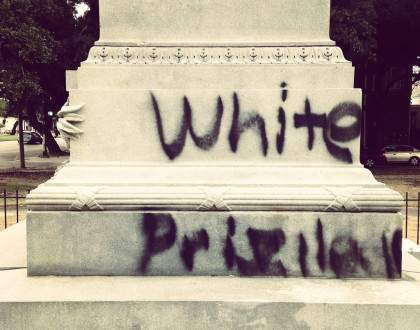An Unfortunate Ode to White Power – Again

At this time last year, as YWCA Boston hosted the city’s third annual Stand Against Racism, Boston Magazine’s April cover carried the banner“Power” showcasing the city’s most powerful and influential leaders, all of whom were white. Coincidentally perhaps, the magazine’s latest “Power” edition hit newsstands again last week, as YW Boston announced its 4th annual Stand Against Racism. And once again, Boston’s cover Power People? All white.
Last year, blogger Matthew Stewart took the magazine to task about its cover story, asking “What’s missing from this picture?” Noting its lack of diversity, he proffered such public displays fuel public perceptions that the image of Boston’s whiteness is directly correlated to Boston’s power. Stewart blogged “perhaps, what is most harmful about this cover image is that it normalizes an image of “power” with an image of whiteness; more specifically, an image of whiteness that remains an invisible standard left unquestioned.”
True, Boston Magazine does try its hand at “diversity” by gracing the cover with several women. However, as one the nation’s most diverse cities, it is disturbing that its eponymous magazine has now twice ignored its leaders of color.
This year’s theme for Boston’s Power list was “the 25 most influential people in Boston philanthropy,” focusing on those at the “upper echelon of society,” where “philanthropy is also about power—the money, influence, and ideas that make things happen.”
Out of 25 leaders, only two people of color, Home for Little Wanderers’ Joan Wallace Benjamin and the Dudley Street Neighborhood Initiative’s John Barros made the list inside the magazine. Why didn’t they make the cover? And in a sidebar, titled “Who’s #26?” a list of honorable mentions includes only three people of color, Claudio Martinez, and Gururaj and Jashree Deshpande out of an additional list of 15.
So, does that mean Boston has only two to five notable philanthropists of color at all? The good news is that there are plenty, including Hubie Jones, Josefina Vázquez, Executive Director of the Boston Women’s Fund; Marti Wilson-Taylor, chair of the Hyams Foundation; Elaine Ng, Executive Director of Boston Chinatown Neighborhood Center; Robert Lewis, Jr. former number two at the Boston Foundation; Rosalin Acosta and Marcel Quiroga, chairs of Milagros para los Ninos; Atsuko Toko Fish; Wayne Budd; Bennie Wiley; the America Red Cross’ Jarrett Barrios; the Partnership’s Carol Fulp; Frederica Williams at Whittier Street Health Center; Walter Ramos at Dorchester House; Sandra Cotterell at Codman Square Health Center; Gloria White-Hammond, and Liz Walker among others.
Once again neglecting to show balance and diversity, Boston Magazine is promoting Boston’s “power” as white, and thus perpetuating the city’s unfortunate reputation as one of America’s most racist cities. Despite promoting itself as the “ultimate guide to Boston living” – a city where the majority of residents are people of color – Boston once again, sadly, misses the mark.
This month, more than 200 organizations are expected to join YW Boston’s 155-year, ongoing effort to eliminate racism through the city’s fourth annual Stand Against Racism. All are taking efforts to rebuke the city’s recent top racist rating by demonstrating our city’s true diversity and inclusiveness, and to offset such privileged affronts like Boston’s Magazine’s second annual ode to white power. Please join us as we take a Stand.
